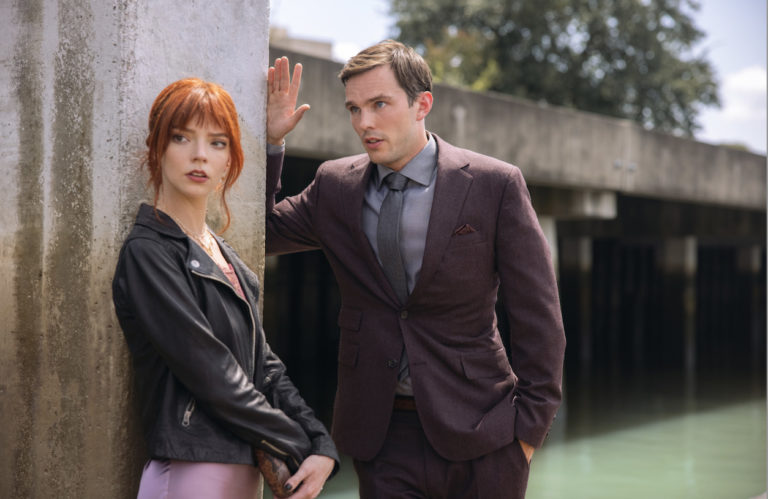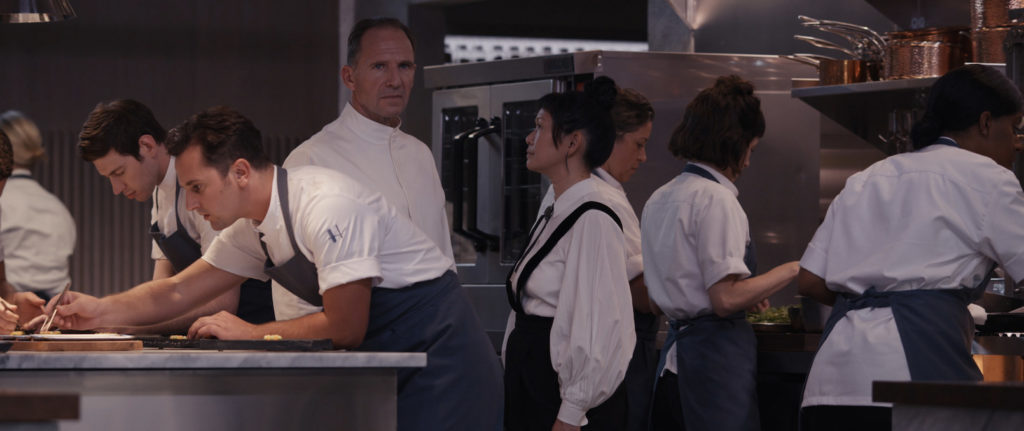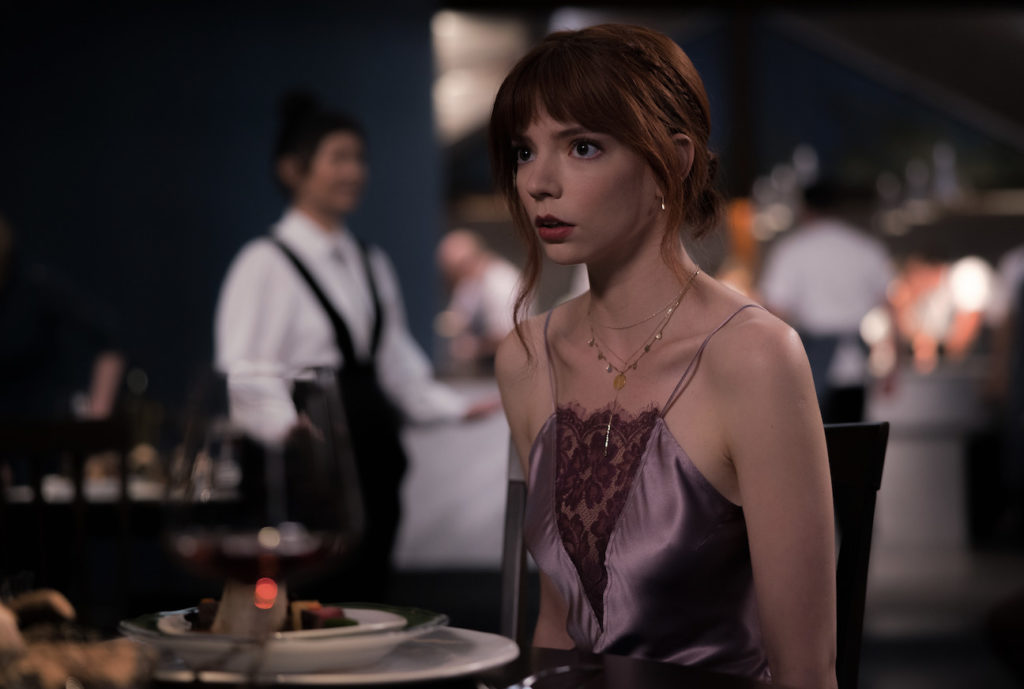
Q: You worked with writer Will Tracy in “Succession.” Writer Seth Reiss and Tracy made an incredibly engaging script. What were the qualities of their script that made you interested in helming this film? Initially wasn’t Alexander Payne supposed to direct it?
MM: When we became friendly and were having a drink, he sent me a script of “The Menu” and said “Hey, take a look.” As soon as I read it — well, three things, really:
Firstly, I just loved it as a cinematic ride. I thought it was such fun and more importantly, I wanted to see this movie. Secondly, I thought how difficult and specific the tone would be to get it right. But I also felt, perhaps a little arrogantly, that I could get it right, that I knew how to do it. I could feel the mix of satire, comedy and the thriller/horror elements. I could find that genre, feel the mixture and how it should be, and how the pacing should be immediately. Thirdly, I suppose, that load of high-end cuisine, I knew very little about it. So it was a little frightening, but frightening in the best way, in a good way. About 10 years ago, I made a deal with myself, instead of running away from subjects in a script that would put me off because I didn’t know anything about it, to go the other way and actually jump in and take a dive into that world. That’s what I did. With “The Menu,” I jumped into that world and went straight into deep research.
Q: It’s intriguing how you seamlessly shot all those scenes in the restaurant. It recalls one of Robert Altman’s styles, being very natural and even spontaneous. How did you craft it with all those actors in the restaurant?
MM: I love that you reference Robert Altman because he’s one of my biggest heroes in cinema. I evolved in a way over the past few years which is a direct imitation of the way he worked with ensemble casts. As we started casting this project, I spoke to all the actors and said that I wanted to work in this Altmanesque style whereby everybody would be on set all the time, pretty much. Everybody would be mic-ed all the time, there would be a lot of improvisation because, as well as what was going on with the script, I would be shooting through to that table and that table. The camera might find anybody at any time. So everybody had to be alive all the time and improvise in character. They loved that way of working and all responded so well to it. That gave me a sense of immersion in the moment.
For the actors, it gave them a continual exploration of the character in the nuance of the scene. As with Altman, I never expect them to do the same thing twice. If Ralph [Fiennes] is walking amongst the diners talking about his childhood, sometimes we’d be playful, other times dull, sometimes threatening. Or sometimes [it would be] all of those things. If we kept changing something in each take — and not be trying to repeat ourselves — it would always trigger something that felt spontaneous and, hopefully, the audience would feel a little bit more connected to the action.

Q: This is such an outstanding cast. Can you take us through the casting process?
MM: The casting process was the best adventure. It was like building my dream cast. That started in place with Ralph to both provide a fix. I always dreamt of casting Ralph in the part. If you just look at Ralph’s work from “Schindler’s List” to “Grand Budapest Hotel,” the spectrum of his expression is extraordinary. When Ralph and I first spoke, we immediately connected in that neither of us wanted him to be just a movie baddie. We want an artist who’s in pain, who’s consumed with self-loathing for the way he’s let his ego corrode his art and he’s lost his way. There’s almost something of a childish vulnerability to that if we start with that poignance instead of starting with a psychotic character. Of course, the unique thing about Ralph is he’s able to bring in all those elements: the psychotic, the master chef, and the child — all of those things, but also be really, really funny. Ralph was the starting point and we connected immediately. And we’d enjoy doing it again.
Next up, I needed an actor who could go face-to-face, toe-to-toe with him, and feel like it was an equal match. This was with [Anya Taylor-Joy’s] character, Margot. Margot is a character who’s in the wrong place at the wrong time. She has come to this restaurant that night and really shouldn’t be there — and doesn’t want to be. But she’s found herself in trouble and is trying to escape this predicament.
I’ve watched Anya Taylor-Joy’s work since “The Witch,” which was her first [real] role. I just went with the rest of the world being knocked out by how powerful her acting is, particularly for one so relatively young. I spoke with Anya and it was the perfect meeting: we saw the character the same way. I knew in those scenes with their characters, Slowik and Margot, that they would feel formidable. This duel between them would have weight and not only with their conflict, but also in their connection, because they both see each other and [establish] an empathy, almost an affection on some level between them. I needed that to be complex, and both of them offered that up.
Then of course we built up the various tables. I [contacted] Mary Vernieu, the casting director, and said, “We’ll build out table by table to get a unique dynamic, an intelligence to [select] those actors, pairing them up and finding the right combinations. Nicholas Hoult, who is Michael Tyler, is brilliant at actually just pushing that character, a ludicrous foodie with his underlying insecurity, but also being able to make money with that. Nick could find that pitch — just on the edge of absurdness but still naturalistic.
That was the same for everybody else, [such as] Janet [McTeer]. Of course, the big surprise package for me was finding Hong Chau. When I watched Hong’s work, I really couldn’t put her in a box. You can’t categorize her. I had a meeting with her, and she was so extraordinarily smart and intuitive about the character. I was so grateful that she came aboard and added what she did with the character of Elsa. She just loved it. So it was a very joyful process.
Q: Dominique Crenn is the first woman chef in America to get three Michelin stars. She brought her signature touch to dishes there. David Gelb, creator of “The Chef’s Table” and director of “Jiro Dreams of Sushi”, helped with the design and presentation of the food. What was it like on set with all those ravishing foods, and working with Dominique and David?
MM: The other part of it was my obsession with authenticity. I didn’t come into this project as a foodie and didn’t know this world well. However much I researched, I would never know enough. I sent the script to Dominique, who does know enough. Dominique, as you know, is one of the world’s greatest chefs. I was so grateful when she came aboard to collaborate with this. She elevates every element of our food from the actual visuals of what the dishes looked like to the whole management and choreography — and the whole look of our kitchen on set. So Dominique brought that.
In terms of trying to parody and satirize the presentation of the food and our obsession with high-end cuisine, I really needed the master of that so I asked David if he would come aboard and shoot some extra food photography for us. He was delighted to. We came to L.A. — he and Wilbur Santa, his director of photography, invented that whole style of photography, for “Chef’s Table” so beautifully. They were great sports. They gave us six to eight images which were absolutely key to elevating the whole look of the food in the film. So when in doubt, get the best people.

Check out more Nobuhiro’s articles.
Here’s the trailer of the film.

